Atlantic Monthly Contributors's Blog, page 269
December 21, 2015
Deadly Suicide Attack in Afghanistan

Updated on December 21 at 3:20 p.m. EST
Six U.S. troops were killed and three others were wounded in an apparent suicide attack Monday in the Parwan province in Afghanistan, officials said.
The attack occurred at about 1:30 p.m. local near Bagram air base, the largest U.S. military facility in the country, located north of Kabul. A convoy of U.S. and Afghan forces was conducting a regular patrol of the base when a suicide bomber on a motorbike collided with their vehicle, according to Reuters.
NATO officials would not disclose the nationalities of the dead as a matter of policy, but U.S. and local officials told the Associated Press, The New York Times, and others that the soldiers killed were all American.
The three wounded were Afghan police officers, Reuters reported, citing the police chief of Parwan.
“We’re deeply saddened by this loss,” said Brigadier General Wilson Shoffner, the top U.S. military spokesman in Afghanistan.
The Taliban has claimed responsibility for the attack in a post on Twitter, NBC News said.
U.S., NATO, and Afghan forces recently have increased their response to a resurgence in Taliban activity in parts of Aghanistan. From the Times:
In recent months … American Special Operations forces have been drawn back onto the battlefield as Afghan forces have struggled against insurgent offensives that are threatening important population centers. United States military assistance from the air as well as on the ground was considered a crucial factor in the Afghan forces’ taking back Kunduz, the first city to briefly fall to the Taliban in 14 years.
Now, as the Taliban make a major push in southern Helmand Province, overrunning districts and knocking at the gates of the provincial capital, Laskar Gah, American Special Forces have been reported on the ground again to try to keep the province from fully falling to the insurgents.
Monday’s attack comes just days after the Pentagon reported a spike in casualties among Afghan security forces at the hands of Taliban insurgents. The agency said that fatalities rose 27 percent between January and mid-November this year, compared with the same period last year.
About 9,800 U.S. troops are stationed in Afghanistan.









The FDA's New Policy on Blood Donations From Gay Men

Updated on December 21 at 2:33 p.m. EST
The U.S. Food and Drug Administration will remove the country’s longtime policy barring all gay and bisexual men from donating blood, the agency said Monday.
The FDA announced on its website that it would lift the blanket ban on these individuals “to reflect the most current scientific evidence.” The policy was instituted in 1983, amid the early AIDS crisis, in an attempt to prevent HIV transmission between blood donors and recipients.
“The FDA’s responsibility is to maintain a high level of blood product safety for people whose lives depend on it,” said the FDA’s Acting Commissioner Stephen Ostroff in a press release.“We have taken great care to ensure this policy revision is backed by sound science and continues to protect our blood supply.”
Existing FDA policy indefinitely prohibits men who have ever had sexual contact with men from donating blood. The new policy would bar men who have had sexual contact with another man in the previous 12 months.
Gay-rights advocates, medical professionals, and others have criticized the longstanding FDA rules, saying the policy was not supported by scientific evidence and perpetuated stigmas against gay men. The National Gay Blood Drive, which has petitioned for a change to FDA regulations, welcomed the change Monday, but said in a statement that the policy is “still discriminatory” because “countless more will continue to be banned solely on the basis of their sexual orientation and without medical or scientific reasoning.”
The FDA said the updated recommendation is in line with those in place “for other men and women at increased risk for HIV infection—such as those who had a recent blood transfusion or those who have been accidentally exposed to the blood of another individual.” The restriction also matches those in several other countries, like United Kingdom and Australia, the FDA said.
Monday’s decision comes one year after an advisory panel in the Department of Health and Human Services, which houses the FDA, voted to recommend the lifting of the ban. As my colleague Julie Beck wrote back then, while gay men are still at increased risk for HIV, doctors and health officials understand the disease now more than ever before. “For example, in 1983, the Centers for Disease Control and Prevention were just ruling out casual contact as a possible means for transmitting AIDS,” Beck wrote. “More than 30 years later, we have preventive drugs for HIV and life expectancy for HIV-positive people in the U.S. is very nearly the same as that of the general population.”









Vladimir Sorokin and the Russian Novel's Identity Crisis

Vast, grand, breathtaking—English-language readers typically associate such words with the 19th-century Russian novel. Bleak, brave, subversive—those go with 20th-century Russian fiction. If it’s epic or dissident, we know how to make sense of it.
Following the Soviet Union’s collapse in the 1990s, however, Russian novels became harder to categorize. If a work wasn’t protest literature, what exactly could it be? This wasn’t a question only for readers of English translations. The collapse posed an identity crisis even for writers who had long avoided protest. Vladimir Sorokin, considered by many to be Russia’s leading novelist, was among those whose writing seemed to be stalled during the Yeltsin period. To find his way forward as a novelist, he had to recreate a relationship to Russia’s new society, to abandon austere detachment and explore the possibility of allegiance to the public. Sorokin’s torturous sense of citizenship, which has reached a fascinating impasse in his latest novel, The Blizzard, is the key to one of the most transfixing bodies of work in world literature.
If anyone had seemed poised to flourish in a postmodern Russia, it would have been Sorokin, born in 1955 and stirring up interest by the time he was 30. Influenced by the Moscow Conceptualists of the 1970s and ’80s, he adopted that group’s vision of artistic creations as wholly autonomous constructs, and in his early work, these constructs aren’t cause for any particular veneration. “Aren’t those just letters on a piece of paper?” he said of his work at the time. His violent, scatalogical, and distinctly unheroic fictions ran jaggedly across the epic and dissident veins of Russian literature. The Queue, first published in Paris in 1985 and composed entirely of dialogue, is set in just that, a queue: one of the long Soviet-era lines of citizens waiting for hours to receive goods—what goods, no one knows. Its satirical take on Soviet dysfunction is probably why it saw English translation in 1988. But The Queue is mostly of a piece with Sorokin’s conceptual mission: His characters standing in line are simply lined up characters on a page.
Perhaps the chaotic Russia of the ’90s—old ideals smashed, no new order emerging—too vividly incarnated Sorokin’s aesthetic. The period evidently thwarted, rather than nourished, his fiction. “There is not always a time for dreams,” he told The New Yorker in 1994, somewhat evasively accounting for a gap in his output that ended up lasting from 1991-’99. He returned to fiction with Blue Lard, a novel that caused him considerable difficulties as Russia began its authoritarian relapse. The novel contains a scene in which a clone of Krushchev sodomizes a clone of Stalin, and several years after publication, it was singled out by Moving Together, a youth group associated with Vladimir Putin, which accused Sorokin of peddling pornography. For the first time, he found himself at the center of a concerted censorship campaign. In 2002, the group picketed the Bolshoi, which had commissioned Sorokin to produce a libretto. Its leaders showed up with a massive mock toilet bowl, into which demonstrators were encouraged to throw copies of his “latrinature.” The protests prompted state prosecutors to open a case against him.
Those charges were dropped, but the episode seems to have thrust a sense of citizenship upon Sorokin. Certainly it discredited the notion that his writing was just letters on paper. “I had a feeling that I had ended up in one of my own stories somehow,” he told The New York Times in 2011. At the same time, the resurrection of Russia’s monarchical and authoritarian political traditions in the Putin era gave new relevance to the previous centuries’ literary traditions. With Ice Trilogy (2002-2005), Sorokin advanced his fiction by swerving away from his early work. Rather than rejecting his country's literary legacy, or rearranging its tropes into conceptual art, he adapted the epic and the dissident strains to his own purposes.
Perhaps the chaotic Russia of the ’90s—old ideals smashed, no new order emerging—too vividly incarnated Sorokin’s aesthetic.Ice Trilogy offers a parallel, science-fiction inflected history of Russia’s 20th century, in which 23,000 blonde and blue-eyed humans are actually rays of “the Primordial Light.” Once the 23,000 have their hearts awakened—by being hammered in the chest with chunks of meteoric ice—they will return to eternity, and the world of humans will end. The trilogy ranges over decades, includes an enormous cast, and amounts to a searching exploration of cult power and the pitilessness of the elite. Although Ice Trilogy was far too esoteric for mass appeal in America, it betrayed signs of a more accessible vision. Nearing the age of 50, Sorokin suddenly sided with humanity—the “meat machines” disdained and enslaved by the Primordial Light—an oddly tender gesture for a writer used to killing off characters as if swatting flies. His own heart was being awakened to a sense of commitment to the people: “The citizen in me has come to life,” he told Der Spiegel in 2007.
2008’s Day of the Oprichnik marks the apotheosis of Sorokin as social critic, and unsurprisingly, it was his first novel to find a mainstream American publisher. Billed by Farrar, Straus and Giroux as “a razor-sharp diagnosis of a country in crisis,” Day of the Oprichnik envisions Russia in 2028, when the social codes of Ivan the Terrible have been resurrected. Following a day in the life of a henchman to the czar, the novel is a cascade of torture, rape, and murder, punctuated by nauseating scenes of luxury among the uppermost class.
But if his American publisher, and audience, expected Sorokin to become the Solzhenitsyn of the Putin era, they will be disappointed. Even as Day of the Oprichnik made its appearance in America, Sorokin was expressing some skepticism about his new role. “Maybe I have a desire to change things,” he told The New York Times, “but I right now do not much believe in it.” The Blizzard, now elegantly translated by Jamey Gambrell, is advertised as a novel “delivering stinging truths” about modern-day Russia. Yet at every turn, the novel evades the sort of critique that made Day of the Oprichnik so legible. If anything, The Blizzard shows Sorokin’s citizenship in a state of temporary defeat.
Like Day of the Oprichnik, The Blizzard is set in the near future, unfolds in real-time, and takes for its protagonist someone in a position of power over the Russian masses—this time beneficent, at least in theory. Platon Ilich Garin, a district doctor, must get to the village of Dolgoye, where a mysterious “black sickness” is turning people into zombies. Garin carries the vaccine, but a dense February blizzard impedes his journey, rendering the world around him into “cold, white, whistling space.” Though his driver calls the mission doomed, Garin’s sense of citizenship urges him forward: “This is an affair of state, man. You and I don’t have the right to turn back. It wouldn’t be Russian. And it wouldn’t be Christian.”
The Blizzard showcases Sorokin’s characteristic outlandishness. Garin travels through the blizzard in a sledmobile, a mode of transportation propelled by dozens of miniature horses. He encounters Vitaminders, a Gypsy-like band who traffic in narcotic “spheres, cubes and pyramids.” The sledmobile crashes into the nostril of a dead giant. In short, Sorokin heaves every conceivable obstacle in the way of Garin, whose mission—to go “to the end of the world in order to do good for people!”—soon seems absolutely futile.
Garin is always complicit in his own sabotage. His aspiration may be toward model citizenship, but he’s constantly weighed down by hypocrisy. His is an odyssey in which the hero succumbs to Sirens and gladly eats the lotus. Sorokin’s blizzard is not only an elemental force; it materializes Garin’s profound inner doubt that acts of heroism are possible in the Russian climate. As he despairs of ever getting to Dolgoye, he laments, “it’s not in my power to overcome this cold, snowy expanse with a wave of my hand.”
Some will read the novel as a critique of intoxication—alcoholic, narcotic, sexual—yet it’s impossible to ignore Sorokin’s close association with Garin. He, too, is a God-fearing Russian, and the novelist and the doctor share an elevated, almost priestly status in society, ministering to the souls of the nation. But in The Blizzard, the best lack all conviction: Our doctor is a chain-smoker, and our novelist is hilariously inept at advancing the plot. Society’s model citizens are revealed as at best impotent, at worst corrupt.
If his American publisher, and audience, expected Sorokin to become the Solzhenitsyn of the Putin era, they will be disappointed.The Blizzard came out in Russia just prior to the Snow Revolution, a series of massive protests from 2011-’13 that briefly seemed to spell the end of the regime. Fiercely suppressed, however, that moment of unrest gave way to the annexation of the Crimea, the invasion of Ukraine, and the resurgence of Putin as a power broker in Syria, to much domestic approval. Likewise, Sorokin’s rage for change, so palpable in Day of the Oprichnik, seems to have given way to overwhelming frustration. Every step forward in The Blizzard is met with the greatest possible resistance, and the novel’s “stinging truths” remain obscured in whirling snow.
Don’t search for those truths between the lines. In some respects, The Blizzard marks the return of Sorokin’s vision of literature as mere letters on paper. Garin’s battle against the elements parallels the struggle of language against the cold, white, and whistling space of the page, a space Sorokin no longer considers a place for coded meanings, one of the core techniques of social critique. As he recently told BOMB magazine: “I now believe there should only be emptiness between the lines. That was what I was trying to do with The Blizzard—in that you only have the text.”
One hopes the text will be enough for an American audience. Having left behind the impassioned citizenship that impelled Day of the Oprichnik, Sorokin may risk losing a readership that, given a foothold, was ready to follow. But if indeed he’s touched the outer limits of social critique, this astonishingly original writer, it seems safe to say, hasn’t yet hit the limits of his madcap imagination.








The Nostalgia Debate Around The Force Awakens

The Atlantic’s David Sims and Spencer Kornhaber discuss two very different reactions to Star Wars: The Force Awakens. (Spoilers abound.)
Kornhaber: The most telling scene of The Force Awakens isn’t about Han Solo’s fate, or Rey’s powers, or BB8 and R2-D2 blooping and bleeping in harmony. It’s the scene where the First Order blows up the star system of The Republic, making for what must be the most significant atrocity ever seen in the Star Wars universe.
The Republic, remember, is what the first six movies were about saving or recreating—a civilization that’s democratic and peaceful and not ruled by black-clothed guys with behavioral issues. Return of the Jedi ended with galaxy-wide celebration following the deaths of the Emperor and Darth Vader, implying a hopeful and freer society could then thrive. The Force Awakens snuffs out that dream midway through and then moves on, quickly. If it had dwelled on the moment, viewers might realize that the heartwarming tale of overcoming they remember from the original movies was just rendered a horrific tragedy.
This isn't quite a Death Star-zaps-Alderaan situation where the rationale was immediately spelled out and its impact immediately seen on Leia’s face. By way of explanation, we get General Hux teutonically screaming that the Republic tolerates “disorder.” We hear Supreme Leader Snoke talk about destroying Resistance’s government backers. We also have the knowledge that the First Order works with the Dark Side, and the Dark Side generally isn’t a huge fan of peace and prosperity.
But after watching the movie, it feels like the most powerful reason for the Republic’s demolition is outside of the narrative. Rather than imagining what the post-Return of the Jedi civilization might have built over 30 years, J.J. Abrams wiped it out, resetting the game board to where it was in 1977: scrappy underdog fighters versus a ruthless fascist force.
Within the overwhelmingly positive reaction to The Force Awakens has been the common acknowledgement that Disney’s new take on the franchise is mostly made up of recycled parts. For a lot of people, this is a big part of the appeal. For others, it’s a filmmaking choice that carries a hint of cynicism but ends up being justified by the entertaining final product. For others—I’d say “just me” if I hadn’t seen a few other gripes along these lines—the lack of originality nearly kills the film. The Force Awakens feels, in some ways, like a betrayal of Star Wars, or a misreading of its essence. There’s nothing wrong with Abrams returning to the universe that the prequels seemed to completely ditch, the one of screaming TIE fighters and of actual human beings with feelings getting wrapped into an epic quest. But there’s something wrong with him returning only to wallow, with him almost completely declining to build anything new within it.
It might seem superficial to say, but a huge part of the original film’s greatness was the way that its production design served up something mindblowing and unfamiliar basically every five minutes. Whoa, laser swords! Whoa, a mechanical planet! Then in the subsequent films: Whoa, terrifying walking tanks! Whoa, a city in the clouds! Whoa, a disgusting slug gangster! Whoa, a mouth in the sand! Star Wars captured multiple generations’ imagination in large part because the filmmakers clearly had a very active one themselves.
For The Force Awakens, though, you have far more “ahhs” of recognition. Ahh, there are the TIE fighters, slapped with a new coat of paint. There’s the Death Star, bigger and snowier. Certainly, it’s cool that Kylo Ren has a modified Imperial transport that resembles an evil seagull. Certainly it’s cool that he has a hilted lightsaber. But those are just tweaks to old stuff. The few attempts at invention mostly did not demonstrate a whole ton of vision. Supreme Leader Snoke is Voldemort in a big throne. The Rathtars on the Millennium Falcon are another version of the monsters JJ Abrams has in his other films—bug-like, tentacled, enormous, distractingly CGI. Maz Kanata was asking for comparisons to Yoda. The only element that actually got me excited about what another galaxy might look and feel like was Rey’s instant bread. Yum.
The original trilogy captured the imagination because the filmmakers clearly had a very active one themselves.And then plotwise, the entire time we’re meant to be spotting the parallels to A New Hope. Rey is Luke, Han is Obi-Wan, and on and on. To an extent, this is nice because it gets back to Star Wars’s essential proposition: unlikely people can rise to greatness. But by so clearly aping the original’s story beats, it prevented much suspense. The assault on the Starkiller felt perfunctory, given that we’ve seen two versions of it before. And as soon as Han Solo went onto that long bridge with Kylo Ren, it seemed clear that Abrams and co-writer Lawrence Kasdan were going for a nostalgic-climax twofer: A New Hope’s Obi Wan death scene, and Empire Strikes Back “I am your father” confrontation. One way or another, Han was getting sabered.
There’s another problem that’s typical to 2015 blockbusters: story jankiness, caused by the need to set up other franchise properties. Common wisdom is that the prequels got bogged down in too much explanation and world-building, which is probably true (I’d argue those movies’ biggest problems were basic issues of filmmaking competency). But The Force Awakens didn’t only not bother to build a world; it took the old world and made it more confusing. The Resistance is a paramilitary force fighting on the Republic’s behalf but that’s maybe not actually part of the Republic because … Politics? Logistics? Tax benefits? Finn had a crisis of conscience that no other Trooper had because … the Force? R2-D2 randomly woke up because … the Force? Maz ended up with Luke’s lightsaber because … the Force? These things aren’t trivia: You need a working theory about them to understand the plot. But the film decided to turn these questions into cliffhangers for the sequels, or—I suspect in some of the lesser cases—grist for associated novels, comic books, TV shows, and video games. (Indeed, the relationship between all the proper noun organizations in the movie apparently was explained in some recent official novels).
I know it feels like I’m quibbling, especially when the reaction to the movie has been so widely positive. It’s true that the acting, the banter, and the effects were all great. But I think conceptually, Abrams and co. played things safe in a way that feels untrue to the originals, and the results feel hollow—the movie’s less an odyssey to another universe than a reminder of the calculations that rule our own. David, I know you were happy. Can you tell me what I missed?
David Sims: Spencer, when we chatted about our reactions to the film on Friday morning, I deployed a ham-fisted metaphor. Imagine George Lucas had built something beautiful in 1977: a work of art, a grand piece of architecture, whatever; then, years later, he defaced it, basically blew it to smithereens, with his godforsaken prequels. With The Force Awakens, J.J. Abrams is tasked with restoring that desecrated temple to its former glory, so that new generations can enjoy it. This is a work of nostalgia, to be sure. At times, it reeks of corporate approval, steering clear of any crazy new concepts that might rock the boat as Disney sets its multi-billion-dollar franchise acquisition out to sea. But I think it had to be done, to give this world a chance to recover from the many wrongs done to it.
What’s new about The Force Awakens? Why, this new cast we’ve assembled—there’s not a bum note to be found in the work of John Boyega, Oscar Isaac, Adam Driver, and most of all Daisy Ridley, who turns out to be the no-kidding lead of this franchise, a twist I hadn’t expected. So much of the marketing had focused around Boyega’s ex-stormtrooper Finn, whom I expected to be a Luke Skywalker analogue, with Rey (Ridley) as the hard-scrabble, tinkering Han Solo type. Though this movie is indeed a remix of many of the original Star Wars’s story beats, there’s no exact analogues to be found in these characters—everyone’s a little bit of everything, and especially in the film’s first (and strongest) act, they’re all just so darn excited to be part of a Star Wars movie.
That’s the thrill I thought Abrams captured really well as he dropped in references to the old films, bit by bit. As Rey and Finn get on the Millennium Falcon, meet Han Solo, and get swept up into the Resistance (which is just the rebranded Rebel Alliance), they’re as wide-eyed and goofy as any Star Wars fan might be, and that enthusiasm helps carry the film through its wobbly mid-section where everyone starts showing up (Leia! C-3PO! Ackbar!) and momentum is gathered for the big climax, which feels the most ripped off from A New Hope. There’s dogfighting, there’s a trench run, there’s the destruction of a superweapon, and there’s an emotional lightsaber battle. The film is echoing the past, for sure, and there’s times where it feels rote. But it pulls it off mostly because it’s introduced great new characters into the mix. The world is restored, the tactile sense of the Star Wars universe is back after a decade of CGI prequels, and now there’s a whole new cast to play around in it.
The force that’s pulling Finn and Rey together is that need for family—and that’s the same force Kylo is seemingly resisting.To answer a few of your specific criticisms, some of which I agree with: The destruction of the Republic feels entirely half-assed, the same trick Abrams pulled in his Star Trek movie where he imploded the planet Vulcan to make his rebooted world different from what came before. Here, it’s even worse, because like you say, he’s just maintaining the chaos we know from the original trilogy, a battle between Rebels and Empire, without a central government or thoroughly changed world. Starkiller Base is the movie’s least impressive idea, and everything around it feels equally unimpressive. Snoke, indeed, is a Voldemort clone with no definitive purpose other than to be vaguely evil—I hope he isn’t this series’ ultimate villain. And yes, there are plenty of coincidences. But that’s something these movies have always done. The Force! It’s out there! Floating around! Nudging the right people into the right places! Getting our heroes into the soup and enjoying the final result!
Kornhaber: You’re right that Finn and Rey are refreshing additions to Star Wars. Any sequel set 30 years later would need new protagonists; Abrams & co. dreamed up good ones. Rey, especially, seems like an instantly iconic work of writing and acting. I loved how every single time someone went to rescue her, she had already saved herself. I also loved how much appreciation she showed for Finn, despite how bumbling his efforts sometimes were.
But even when it came to these great new heroes, I was distracted by a feeling of sketchiness around their motivations. Why exactly is Finn so drawn to Rey? Remember: He approaches her, a stranger, as she’s being accosted, and he later risks the fate of the entire galaxy by lying about his own Starkiller expertise in the hopes of saving her. We are left, again, to make guesses about very basic things: Finn has bonded to Rey because (a) the Force told him to and/or (b) having been raised in semi-isolation, he formed a birdling-like attachment to the first humanoid he made eye contact with outside of the First Order.
And it’s theoretically a neat inversion to have Rey desperately want to stay on Jakku instead of making like Luke by trying to escape her boring, dusty planet. But whereas Luke’s journey was about losing everything and then seizing the opportunity to move on and make something of himself, Rey has surprisingly little control over the plot. Scene-to-scene, she’s a badass, the kind who can overpower Kylo Ren without any real training. But her overarching narrative throughout the movie is about being either pursued or kidnapped (and then escaping and surviving). She wants to go nowhere except home—except for at the end, when she meets up with Luke. I suppose you could argue that this is a more realistic depiction of what it would take for someone to uproot their life and try and become an intergalactic hero. But it also contributes to the feeling that the plot moves mostly because of the story requirements of the screenwriters—aided by the catchall plot powers of the Force—rather than because of the decisions of characters with defined goals.
Sims: What I love in this film is the idea of a makeshift family being formed, an echo of the first film but one of the faintest. In Star Wars, Leia is already a hardened Rebel commander, Solo is a salty space dog in his thirties, and Luke is the only wide-eyed innocent, cast into a dangerous world and a movement he gets swept up in. Here, the three main characters have all been ripped from their families. Finn was raised from babyhood to be a brainwashed Stormtrooper. Rey is waiting for the people who abandoned her on Jakku, believing a lie she’s told herself so many times it’s become the truth (that they’re going to return). Kylo Ren, the son of Han Solo and Leia (gasp!), the grandson of Vader, and the former apprentice of Luke, is tortured with the weight of that legacy. The force that’s pulling Finn and Rey together is that need for family, that desire to not be alone—and that’s the same force Kylo is seemingly resisting.
Man, just thinking about Kylo Ren gets me excited to see this movie again. Compare him to the prequels, where George Lucas had three bites at the apple to try and create a similar character, a powerful Jedi crushed by the burden of expectation (Anakin Skywalker). He came off as a soggy dweeb when he was supposed to be tormented. Kylo Ren’s tantrums feel like privileged whining, to be sure, but there’s real edge and fear and weight to Adam Driver’s performance, and his climactic decision with Han Solo, his turn to true darkness, feels much more earned. Abrams has returned to those simple storytelling beats that Lucas once used well, then used badly, and the notes are familiar—but they’re still well-played.
Kornhaber: Oh, damn: “The force that’s pulling Finn and Rey together is that need for family, that desire to not be alone—and that’s the same force Kylo is seemingly resisting.” That’s good stuff, and probably even true! I saw the movie again on Sunday, and this time I noticed how the script itself seemed to acknowledge its own implausibilities. When the two young heroes start squealing to one another about their unlikely success piloting the Millennium Falcon, or when Rey puffs, “That was lucky” after saving Finn from Rathtars, it’s both an example of Abrams making like lots of other 2015 filmmakers and going meta, and also of the characters paying attention to what’s going on around them. It got to the point that when the ground opened up between Kylo and Rey after their big lightsaber battle, the deus ex machina didn’t feel cheap at all. It would be weirder if, after all it had done up until then, the universe suddenly decided not to intervene.
I definitely agree that this movie is a nice corrective to the prequels in that it offers compelling human beings to root for and against, and it keeps the action going. I think that most of the things that I disliked can be seen as corrections, too, but overcorrections: Instead of the CGI future-shock of the early aughts, we got a slick nostalgia product that's perfect for the era of peak reboots. It is, indeed, just a movie; it does, indeed, set up a trilogy that could go any number of places. I just hope they are places that Star Wars hasn’t been before.









The 2016 U.S. Presidential Race: A Cheat Sheet

Make sure you’re sitting down before you read this, but: Lindsey Graham is not going to be president.
The South Carolina senator announced during an interview with CNN Monday morning that he will drop out of the race, eschewing the public speeches other Republicans have used to depart. It’s a fitting end to Graham’s campaign, which began somewhat nonchalantly and never really made it onto the radar polling-wise.
It was a strange campaign all along. There was the time Donald Trump gave out Graham’s personal phone number. There was the time Graham responded by making a video in which he destroyed flip phones in baroque manners. There was the time Graham felt compelled to tell stories about his romantic past in response to a series of questions implying he was gay. There was the time he promised to have a “rotating first lady.”
But there was never much chance Graham was going to win the nomination. While he’s extremely hawkish on foreign policy, his willingness to work with Democrats and his moderation on issues like immigration reform guaranteed that many Republicans would never vote for him. He also didn’t have the fundraising base to compete, and didn’t cultivate it; even in South Carolina he struggled. That allowed him to take an outsider’s role in the race, criticizing his rivals and telling bold truths, or at least what he took to be bold truths. (Ironically, Senator Rand Paul—the least interventionist Republican candidate on foreign policy, has adopted a similar role.)
This reached its peak at the Republican Jewish Coalition meeting in early December, where a loose and candid Graham took shot after shot at Ted Cruz for his position on abortion. “How many of you believe we’ve got a problem with young women as Republicans?” Graham said. “How about abortion? I believe that you can be pro-life and win an election. But if you are going to tell a woman who has been raped she has to carry the child of a rapist, you’re losing most Americans. Good luck with that.” Graham added: “Not the speech you thought you were going to hear?”
In an important way, however, Lindsey Graham won. He entered the race saying that he wanted to ensure that there was a hawkish voice in the race—he was concerned that too many Republicans didn’t understand the importance of the American military in American foreign policy. But as last week’s Republican debate showed, the GOP field is no longer timid about saying how they’d use American power abroad. Many of them want to deploy ground troops to fight ISIS. John Kasich and Chris Christie both happily said they’d shoot down Russian planes in a no-fly zone, even if it led to World War III.
Graham made just this point in a short video announcing he was suspending his campaign. “I got into this race to put forward a plan to win a war we cannot afford to lose, and to turn back the tide of isolationism that was rising in our party,” he said. “I believe we’ve made enormous progress on this effort.” That’s all the more remarkable given that Graham never managed to make it off the undercard-debate stage and into the main event. He may have been polling at less than 1 percent in RealClearPolitics’s average, but sometimes numbers don’t tell the whole story.
Graham’s departure brings the Republican field down to 13 contenders. With so many candidates in the mix, it’s tough to keep track of it all. To help out with that, this cheat sheet on the state of the presidential field will be periodically updated throughout the campaign season. Here’s how things look right now.
* * *
The Republicans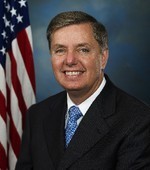 Wikimedia [image error]
Lindsey Graham
Wikimedia [image error]
Lindsey Graham
Who is he? A senator from South Carolina, he’s John McCain’s closest ally in the small caucus of Republicans who are moderate on many issues but very hawkish on foreign policy.
Is he running? No sir. Graham kicked off the campaign June 1 but suspended it on December 21.
Who wanted him to run? John McCain, naturally. Senator Kelly Ayotte, possibly. Joe Lieberman, maybe?
Could he have won the nomination? No. But he had some fun in losing it.
What else do we know? Graham promised to have a rotating first lady if he wins. We were rooting for Lana del Ray.
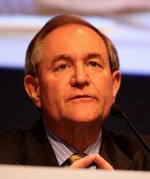 Gage Skidmore
Jim Gilmore
[image error]
Gage Skidmore
Jim Gilmore
[image error] Who is he? Right? Gilmore was governor of Virginia from 1998 to 2002. Before that, he chaired the Republican National Committee for a year. In 2008, he ran for Senate in Virginia and lost to Mark Warner by 31 points.
Is he running? Yes. He filed his papers on July 29.
Who wants him to run? Who knows?
Can he win? Nah.
Does his website have a good 404 page? Holy Freudian slip, Batman!
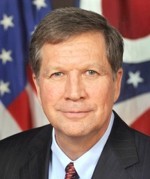 Wikimedia
John Kasich
[image error]
Wikimedia
John Kasich
[image error] Who is he? The current Ohio governor ran once before, in 2000, after a stint as Republican budget guru in the House. Between then and his election in 2010, he worked at Lehman Brothers. Molly Ball wrote a definitive profile in April.
Is he running? Yes. His announcement was July 21 at Ohio State University in Columbus.
Who wants him to run? Kasich’s pitch: He’s got better fiscal-conservative bona fides than any other candidate in the race, he’s proven he can win blue-collar voters, and he’s won twice in a crucial swing state.
Can he win the nomination? Kasich seems to have firmly established himself as a lower-middle-tier candidate: On the main debate stages, but nowhere near the nomination. His strategy has long been to win New Hampshire, where he is ahead of Jeb Bush (but behind four others), but the surge of Chris Christie—another moderate-ish, technocratic governor—in the Granite State is bad news for Kasich’s nomination hopes.
What else do we know? John Kasich bought a Roots CD and hated it so much he threw it out of his car window. John Kasich hated the Coen brothers’ classic Fargo so much he tried to get his local Blockbuster to quit renting it. George Will laughed at him. John Kasich is the Bill Brasky of philistinism. John Kasich probably hated that skit, too.
Does his website have a good 404 page? Nope.
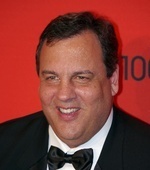 David Shankbone
Chris Christie
[image error]
David Shankbone
Chris Christie
[image error] Who is he? What’s it to you, buddy? The combative New Jerseyan is in his second term as governor and previously served as a U.S. attorney.
Is he running? Christie kicked off his campaign June 30 at Livingston High School, his alma mater.
Who wants him to run? Moderate and establishment Republicans who don’t like Bush or Kasich; big businessmen, led by Home Depot founder Ken Langone.
Can he win the nomination? Doubtful. The tide of opinion had turned against Christie even before the "Bridgegate" indictments. Citing his horrific favorability numbers, FiveThirtyEight bluntly puns that “Christie's access lanes to the GOP nomination are closed.” But since snagging the endorsement of the New Hampshire Union Leader, he’s seen a nice boomlet.
Does his website have a good 404 page? We would have gone with the GIF, but sure.
 Gage Skidmore
Donald Trump
[image error]
Gage Skidmore
Donald Trump
[image error] Who is he? The real-estate developer and reality-TV star fired TV personality almost certainly isn’t worth as much as he wants you to think he is.
Is he running? And how.
Who wants him to run? A shocking portion of the Republican primary electorate; Democrats; white supremacists. The rest of the Republican field, along with its intellectual luminaries, however, seem horrified.
Can he win the nomination? We’ve heard over and over again that he has no chance. But after months, he’s still leading the field, so ...
[image error] What else do we know? He cheats at golf, probably.[image error] Gage Skidmore
Jeb Bush
[image error]
Gage Skidmore
Jeb Bush
[image error] Who is he? The brother and son of presidents, he served two terms as governor of Florida, from 1999 to 2007.
Is he running? Yes, as of June 15.
Who wants him to run? Establishment Republicans; George W. Bush; major Wall Street donors.
Can he win the nomination? Boy, can he? Bush still has a lot of money behind him—mostly in his super PAC, Right to Rise—and his campaigning seems to have improved slightly on its low-energy nadir, but at some point he has to start looking like a real candidate. That hasn’t happened yet.
Does his website have a good 404 page? Yes—y en español también.
 Michael Vadon
George Pataki
[image error]
Michael Vadon
George Pataki
[image error] Who is he? Pataki ousted incumbent Mario Cuomo in 1994 and served three terms as governor of New York.
Is he running? Yes. He announced May 28.
Who wants him to run? It's not clear. Establishment Northeastern Republicans once held significant sway over the party, but those days have long since passed.
Can he win the nomination? Nope.
Does his website have a good 404 page? No.
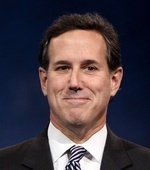 Gage Skidmore
Rick Santorum
[image error]
Gage Skidmore
Rick Santorum
[image error] Who is he? Santorum represented Pennsylvania in the Senate from 1995 until his defeat in 2006. He was the runner-up for the GOP nomination in 2012.
Is he running? Yes, with a formal announcement on May 27.
Who wants him to run? Social conservatives. The former Pennsylvania senator didn't have an obvious constituency in 2012, yet he still went a long way, and Foster Friess, who bankrolled much of Santorum's campaign then, is ready for another round.
Can he win the nomination? Nah. As much as Santorum feels he deserves more respect for his 2012 showing, neither voters nor the press seem inclined to give it to him, and he remains trapped in the basement.
Does his website have a good 404 page? No.
 Gage Skidmore
Mike Huckabee
[image error]
Gage Skidmore
Mike Huckabee
[image error] Who is he? An ordained preacher, former governor of Arkansas, and Fox News host, he ran a strong campaign in 2008, finishing third, but sat out 2012.
Is he running? Yes. He kicked off the campaign May 5.
Who wants him to run? Social conservatives; evangelical Christians.
Can he win the nomination? No. Evangelicals have flocked to Ben Carson and Ted Cruz instead. Huckabee’s answer has been to play as a populist, but that has its own pitfalls: He faces fire from strict conservative groups for tax hikes while he was governor.
Does his website have a good 404 page? It’s pretty good.
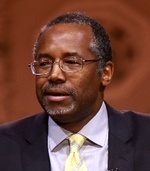 Gage Skidmore
Ben Carson
[image error]
Gage Skidmore
Ben Carson
[image error] Who is he? A celebrated former head of pediatric neurosurgery at Johns Hopkins, Carson became a conservative folk hero after a broadside against Obamacare at the 2013 National Prayer Breakfast.
Is he running? Yes. He announced May 4.
Who wants him to run? Grassroots conservatives, who have boosted him up near the top of polls, even as Republican insiders cringe. Carson has an incredibly appealing personal story—a voyage from poverty to pathbreaking neurosurgery—and none of the taint of politics.
Can he win the nomination? History weighs heavily against Carson: Not since Dwight Eisenhower has either party nominated anyone without prior elected experience for the presidency. Nonetheless, Carson has quietly shown impressive staying power and is running second or third in national polls. One challenge is that his politics are eclectic unto near incoherence, and he has a tendency to do things like compare ISIS to the Founding Fathers.
Does his website have a good 404 page? No.
 Gage Skidmore
Carly Fiorina
[image error]
Gage Skidmore
Carly Fiorina
[image error] Who is she? Fiorina rose through the ranks to become CEO of Hewlett-Packard from 1999 to 2005, before being ousted in an acrimonious struggle. She advised John McCain’s 2008 presidential campaign and unsuccessfully challenged Senator Barbara Boxer of California in 2010.
Is she running? Yes, as of a May 4 announcement.
Who wants her to run? It isn’t clear exactly what Fiorina’s constituency is, but she’s a business-friendly candidate with a talent for a sharp turn of phrase or jab.
Can she win the nomination? Fiorina went from also-ran to huge story on the strength of her first two debate performances. Since then, however, her momentum seems to have faded. Her first round as a candidate, against Barbara Boxer for Senate in 2010, didn’t turn out so well, so the question is how well she learned the lessons of the licking and can turn them into a more successful campaign.
What else do we know? Fiorina’s 2010 Senate race produced two of the most entertaining and wacky political ads ever, "Demon Sheep" and the nearly eight-minute epic commonly known as "The Boxer Blimp."
Does her website have a good 404 page? No.
 Wikimedia
Marco Rubio
[image error]
Wikimedia
Marco Rubio
[image error] Who is he? A second-generation Cuban-American and former speaker of the Florida House, Rubio was catapulted to national fame in the 2010 Senate election, after he unexpectedly upset Governor Charlie Crist to win the GOP nomination.
Is he running? Yes—he announced on April 13.
Who wants him to run? Rubio enjoys establishment support, and has sought to position himself as the candidate of an interventionist foreign policy.
Could he win the nomination? Rubio finally seemed ready to deliver on his potential starting in November or so, when breakout debate performances pushed him into the spotlight. As Jeb Bush falters, Rubio has cleaned up with major GOP donors. Many analysts have dubbed him the favorite for the nod, but he still has to figure out a way to get back Donald Trump and—in what looks tougher every day—Ted Cruz.
Does his website have a good 404 page? It’s decent.
 Wikimedia
Rand Paul
[image error]
Wikimedia
Rand Paul
[image error] Who is he? An ophthalmologist and son of libertarian icon Ron Paul, he rode the 2010 Republican wave to the Senate, representing Kentucky.
Is he running? Yes, as of April 7.
Who wants him to run? Ron Paul fans; Tea Partiers; libertarians; civil libertarians; non-interventionist Republicans.
Can he win the nomination? Once tabbed by Time as the most interesting man in politics, he has failed to elicit much interest from voters. He almost missed the cut for the December 15 debate, and it was reported that he might have dropped out if he had been excluded. That means it’s only a matter of time, right?
Does his website have a good 404 page? No.
 Wikimedia
Ted Cruz
[image error]
Wikimedia
Ted Cruz
[image error] Who is he? Cruz served as deputy assistant attorney general in the George W. Bush administration and was appointed Texas solicitor general in 2003. In 2012, he ran an insurgent campaign to beat a heavily favored establishment Republican for Senate.
Is he running? Yes. He launched his campaign March 23 at Liberty University in Virginia.
Who wants him to run? Hardcore conservatives; Tea Partiers who worry that Rand Paul is too dovish on foreign policy; social conservatives.
Can he win the nomination? Once dismissed as too conservative and too hated by even fellow Republicans, Cruz’s stock has risen over the course of the fall—though his weaknesses still remain. The case for a Cruz nomination hinges on Donald Trump and Ben Carson collapsing and their support shifting to him; it’s already happening with Carson. He’s also extremely well-funded, and he’s well acquainted with running and willing as an underdog (as his performance in the race for Senate showed). His campaign imagines the race coming down to him and Marco Rubio.
Does his website have a good 404 page? No.
* * *
The Democrats Wikimedia
Hillary Clinton
Wikimedia
Hillary Clinton
Who is she? As if we have to tell you, but: She’s a trained attorney; former secretary of State in the Obama administration; former senator from New York; and former first lady.
Is she running? Yes.
Who wants her to run? Most of the Democratic Party.
Can she win the nomination? A better question is whether she can lose it.
What else do we know? The real puzzler, after so many years with Clinton on the national scene, is what we don't know. Here are 10 central questions to ask about the Hillary Clinton campaign.
Does her website have a good 404 page? If you’re tolerant of bad puns and ’90s ’80s outfits, the answer is yes.
 Wikimedia
Martin O'Malley
Wikimedia
Martin O'Malley
Who is he? He’s a former governor of Maryland and mayor of Baltimore.
Is he running? Yes. He announced his campaign on May 30.
Who wants him to run? Not clear. He has some of the leftism of Bernie Sanders or Elizabeth Warren, but without the same grassroots excitement.
Can he win the nomination? Probably not. Why O’Malley—who says all the right progressive things—can’t gain any momentum among progressives who seem eager for Sanders, for Warren, really for anyone but Clinton, is a fascinating conundrum. Recently, he has feuded with Democratic National Committee Chair Debbie Wasserman Schultz, accusing the party apparatus of being in the tank for Clinton.
What else do we know? Have you heard that he plays in a Celtic rock band? You have? Oh.
Does his website have a good 404 page? No.
 Wikimedia
Bernie Sanders
Wikimedia
Bernie Sanders
Who is he? A self-professed socialist, Sanders represented Vermont in the U.S. House from 1991 to 2007, when he won a seat in the Senate.
Is he running? Yes. He announced April 30.
Who wants him to run? Far-left Democrats; Brooklyn-accent aficionados; progressives who worry that a second Clinton administration would be far too friendly to the wealthy.
Can he win the nomination? When Sanders launched his campaign, this question seemed more or less beside the point. That’s no longer true: Sanders is running neck and neck or even ahead of Clinton in key early primary states and regularly drawing larger crowds than her. It remains extremely difficult to see him winning the nomination—as Dems from Howard Dean to George McGovern can remind you, primary voters tend to gravitate to “electable” general-election candidates alone.
Does his website have a good 404 page? Yes, and it is quintessentially Sanders.
* * *
Out of the Running Democrats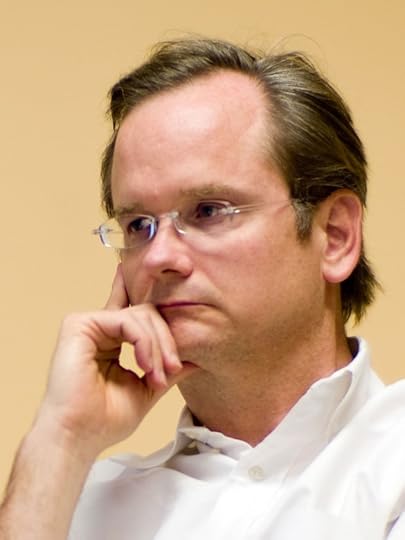 Wikimedia
Lawrence Lessig
Wikimedia
Lawrence Lessig
Who is he? Lessig is a professor at Harvard Law School, political activist, and occasional Atlantic contributor.
Is he running? No. Having announced a run in early September, he dropped out on November 2.
Who wanted him to run? Lessig’s campaign was designed to cater almost exclusively to the many Americans who are upset about the influence of money in politics. He pitched himself as a “referendum president” who would pass his proposed Citizens Equality Act of 2017, which would enact universal voting registration, campaign-finance limits, and anti-gerrymandering provisions.
Could he have won the nomination? No. In dropping out, he cited his inability to break into the Democratic debates, but given his lack of electoral experience, his idiosyncratic platform, and the track record of his Mayday PAC in the 2014 election, he never really had a shot.
What else do we know? In a season 6 episode of The West Wing, a fictional Lessig (played by Christopher Lloyd) worked with the White House to write a new constitution for Belarus.
Does his website have a good 404 page? “Sorry, we’re too busy fixing democracy to design a clever 404 page!” You have time now!
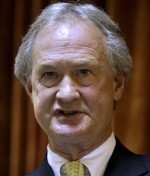 Steven Senne / AP
Lincoln Chafee
Steven Senne / AP
Lincoln Chafee
Who is he? The son of beloved Rhode Island politician John Chafee, Linc took his late father’s seat in the U.S. Senate, serving as a Republican. He was governor, first as an independent and then as a Democrat.
Is he running? No. Chafee announced his run on June 3, but ended it October 23.
Who wanted him to run? You can meet all 10 of them in this great NPR piece.
Could he have won the nomination? No. Chafee’s showing in the first debate was so bad that even Wolf Blitzer begged him to get out for his own reputation’s sake.
Does his website have a good 404 page? No.
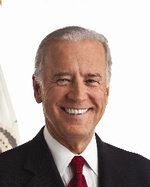 Wikimedia
Joe Biden
Wikimedia
Joe Biden
Who is he? Biden is vice president, and the foremost American advocate for aviator sunglasses and passenger rail.
Is he running? No. After lengthy deliberation, Biden ruled out a run on October 21.
Who wanted him to run? The original driving force for the run seems to have been the late Beau Biden, along with his brother Hunter. An outside group called Draft Biden (slogan: “I’m Ridin’ With Biden”) tried to coax him in.
Could he have won the nomination? It’s highly doubtful. Even when Hillary Clinton was at her weakest, she had huge organizational advantages. And past presidential campaign showed that Biden, while compelling, could be an undisciplined, self-defeating candidate.
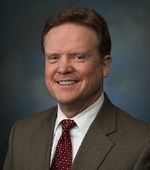 Wikimedia
Jim Webb
Wikimedia
Jim Webb
Who is he? Webb is a Vietnam War hero, author, and former secretary of the Navy. He served as a senator from Virginia from 2007 to 2013.
Is he running? Not at the moment. Webb launched his bid July 2 but dropped it October 20. He might yet mount an independent campaign.
Who wants him to run? Dovish Democrats; socially conservative, economically populist Democrats; the Anybody-But-Hillary camp.
Could he have won the nomination? No. He’s simply more conservative than most Democrats, out of step with the party on racial issues, and ill at ease on the stump.
What else do we know? Read Webb’s longtime friend James Fallows on why he wanted Webb in the race.
Does his website have a good 404 page? No.
 Wikimedia
Elizabeth Warren
Wikimedia
Elizabeth Warren
Who is she? Warren has taken an improbable path from Oklahoma, to Harvard Law School, to progressive heartthrob, to Massachusetts senator.
Is she running? Haha, still no!
Who wants her to run? Progressive Democrats; economic populists, disaffected Obamans, disaffected Bushites.
Can she win the nomination? No, because she’s not running.
* * *
Republicans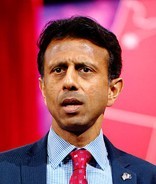 Gage Skidmore [image error]
Bobby Jindal
[image error]
Gage Skidmore [image error]
Bobby Jindal
[image error] Who is he? A Rhodes Scholar, he’s the outgoing governor of Louisiana. He previously served in the U.S. House.
Is he running? No. He kicked off his campaign on June 24 but suspended it on November 17.
Who wanted him to run? It’s was hard to say. Jindal assiduously courted conservative Christians, both with a powerful conversion story (he was raised Hindu but converted to Catholicism in high school) and policies (after other governors reversed course, he charged forward with a religious-freedom law). But he still trailed other social conservatives like Ted Cruz and Mike Huckabee.
Could he have won the nomination? No. Jindal never gained traction at the national level, faced an overcrowded field of social conservatives, and his stewardship of Louisiana came in for harsh criticism even from staunch fiscal conservatives.
What else do we know? In 1994, he wrote an article called “Physical Dimensions of Spiritual Warfare,” in which he described a friend’s apparent exorcism.
Does his website have a good 404 page? Meh. Good joke, but past its expiration date.
 Gage Skidmore
Rick Perry
[image error]
Gage Skidmore
Rick Perry
[image error] Who is he? George W. Bush’s successor as governor of Texas, he entered the 2012 race with high expectations, but sputtered out quickly. He left office in 2014 as the Lone Star State’s longest-serving governor.
Is he running? Yes. He announced on June 4. Perry dropped out of the race on September 11.
Who wanted him to run? Bueller?
Could he have won the nomination? No. Perry promoters insisted that Rick 2016 was a polished, smart campaigner, totally different from the meandering, spacey Perry of 2012. It didn’t seemed to matter in this field. Perry had to quit paying his staff in South Carolina and New Hampshire, and was down to a single staffer in Iowa when he dropped out.
Does his website have a good 404 page? That depends. Is this an “oops” joke? If so, yes.
 Gage Skidmore
Sarah Palin
[image error]
Gage Skidmore
Sarah Palin
[image error] Who is she? If you have to ask now, you must not have been around in 2008. That’s when John McCain selected the then-unknown Alaska governor as his running mate. After the ticket lost, she resigned her term early and became a television personality.
Is she running? No, despite a bizarre speech in January that made a compelling case both ways.
Who wants her to run? Palin still has diehard grassroots fans, but there are fewer than ever.
Can she win the nomination? No.
When will she announce? It doesn't matter.
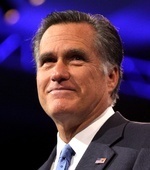 Gage Skidmore
Mitt Romney
[image error]
Gage Skidmore
Mitt Romney
[image error] Who is he? The Republican nominee in 2012 was also governor of Massachusetts and a successful businessman.
Is he running? Probably not, but who knows! He announced in late January that he would step aside, but now New York claims that the Trump boom has him reconsidering.
Who wanted him to run? Former staffers; prominent Mormons; Hillary Clinton's team. Romney polled well, but it's hard to tell what his base would have been. Republican voters weren't exactly ecstatic about him in 2012, and that was before he ran a listless, unsuccessful campaign. Party leaders and past donors were skeptical at best of a third try.
Could he have won the nomination? He proved the answer was yes, but it didn't seem likely to happen again.
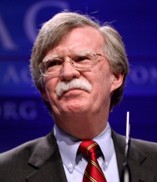 Gage Skidmore
John Bolton
Gage Skidmore
John Bolton
Who is he? A strident critic of the UN and leading hawk, he was George W. Bush’s ambassador to the UN for 17 months.
Is he running? Nope. After announcing his announcement, in the style of the big-time candidates, he posted on Facebook that he wasn’t running.
Who wanted him to run? Even among super-hawks, he didn’t seem to be a popular pick, likely because he had no political experience.
Could he have won the nomination? They say anything is possible in politics, but this would test the rule. A likelier outcome could be a plum foreign-policy role in a hawkish GOP presidency.
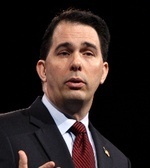 Gage Skidmore
Scott Walker
[image error]
Gage Skidmore
Scott Walker
[image error] Who is he? Elected governor of Wisconsin in 2010, Walker earned conservative love and liberal hate for his anti-union policies. In 2013, he defeated a recall effort, and he won reelection the following year.
Is he running? No. Walker dropped out of the race on September 21.
Who wanted him to run? Walker was a favorite of conservatives who detest the labor movement because of his union-busting in Wisconsin. He attracted interest from the Koch brothers, and some establishment Republicans saw him as the perfect marriage of executive know-how, business-friendly credentials, and social conservatism without culture-warrior baggage.
Could he have won the nomination? For months, Walker was considered—along with Jeb Bush and Marco Rubio—a top-tier contender for the nomination. Hurricane Trump hurt all three, but none more than Walker. After largely fading from view during the second presidential debate, he polled below 1 percent in a national CNN poll. Perhaps a radically different campaign would have produced a different result, but Walker didn’t seem ready for national primetime.
Did his website have a good 404 page? Aye, matey.









What Happened on the Las Vegas Strip?

Updated on December 21 at 1:45 p.m. EST
A woman drove her car onto a crowded sidewalk on the Las Vegas Strip Sunday night, killing at least one person and injuring more than 30 others in what police described as an “intentional” act.
Local police said the woman plowed her 1996 Oldsmobile several times into dozens of pedestrians walking along Las Vegas Boulevard shortly before 7 p.m. Sunday. She fled the scene, but was later detained by police.
Police identified the driver as 24-year-old Lakeisha N. Holloway. Prosecutors will charge Holloway with one count of murder with a deadly weapon, but additional charges are possible.
The county coroner’s office identified the victim who died as Jessica Valenzuela, a 32-year-old Arizona resident who was visiting Las Vegas with her husband, according to the Associated Press.
Six people were transported to the hospital in critical condition Sunday night, but were later upgraded to stable condition, according to KSNV News 3 in Las Vegas. Twenty-six people also sustained injuries, and four others were treated for minor injuries and released.
Las Vegas Deputy Police Chief Brett Zimmerman said Sunday the incident “was not an act of terrorism,” but that it appeared to be “intentional.” The police department’s Lieutenant Peter Boffelli said the woman was being tested for drugs and alcohol.
Here’s one account of what happened, from KSNV News 3:
One witness, Los Angeles resident Michal Jackson, said the car was initially driving slowly on the sidewalk, and someone tried to get it to stop. Jackson said the car sped up when it reached a group of people.
“It accelerated, and it just plowed through the group of people, and we were in shock,” said Jackson. “Then it kind of hopped off the curb, and there was a lady that was stuck under the car, and when it hopped back on the curb, she was laying between the curb and the street, and she wasn't moving at all.”
The area was roped off with police tape for the night, and reopened at around 6 a.m. Monday local time. Las Vegas police have asked witnesses to call their homicide department.
The Las Vegas Strip is the heart of the tourism industry in the Nevada city, which drew 41 million visitors last year, according to its website.









December 20, 2015
Israel Versus Hezbollah, Round Three?

On Sunday morning, Arab media outlets reported that Israeli forces launched a missile strike that killed Samir Kuntar, a senior Hezbollah leader, and several others in Syria.
Following the reports, Hezbollah released a characteristically bellicose statement confirming his death:
At 10:15 p.m. on Saturday December 19, Zionist warplanes struck a residential building in Jaramana city in Damascus countryside. The dean of liberated detainees from Israeli prisons, brother Mujahid Samir Kuntar was martyred along with several Syrian citizens in the strike.
While Israel did not take responsibility for the strikes, several Israeli government officials and former military officers let it be known they were not sad to learn of Kuntar’s untimely demise. “It is good that people like Samir Kuntar will not be part of our world,” one member of Israeli Prime Minister Benjamin Netanyahu’s cabinet told Israel Radio.
Hours after the episode, Israeli media reported that at least three missiles fired from Lebanon landed in northern Israel, causing no damages or injuries. The projectiles landed near the Israeli city of Nahariya, which is meaningful in the context of Kuntar’s violent legacy.
In 1979, Kuntar led a raid in which he and a group of attackers infiltrated Israel from Lebanon, killed an Israeli police officer, and then kidnapped Danny Haran and his four-year-old daughter from their Nahariya home. As Israeli troops bore down on them, Kuntar executed the two on a beach. Haran’s two-year-old daughter also died when his wife, Smadar, accidentally smothered her while trying to stifle her cries from the crawlspace where they were hiding. (On Sunday, more than 45 years later, Smadar Haran called Kuntar’s death “historic justice.”)
Kuntar was sentenced to life in prison in Israel, but was controversially released in 2008, when he and four other Hezbollah prisoners were freed in exchange for the bodies of two Israeli soldiers that the group kidnapped and killed in 2006. Kuntar received a hero’s welcome in Lebanon and was eventually received and honored by former Iranian President Mahmoud Ahmadinejad in Tehran. In September, the U.S. State Department designated Kuntar as a terrorist, noting his rise through the ranks of Hezbollah.
The biggest question is whether Israel’s purported attack and Hezbollah’s alleged retaliation will augur the opening of a new front between the two foes. A fragile UN-imposed ceasefire has mostly held in the nine years since Israel and Hezbollah fought a 34-day war to a standstill in the second major conflict between the two parties.
Earlier this year, two Israeli soldiers were killed in a Hezbollah ambush near the Lebanese border after Israel killed five members of the group in another strike. That limited level of retaliation could be the blueprint by which Hezbollah operates, particularly as the group battles to keep the Assad regime afloat in the Syrian civil war.
The death of Kuntar is also significant because the recent escalation of Russia’s involvement in the Syrian civil war, which many thought would forestall this kind of high-profile strike.
“The Israeli strike dented the new sense of security on the part of Mr. Assad’s supporters that came after Russia began its direct military intervention in the conflict in late September, using its air power to shore up Mr. Assad and his Hezbollah allies,” noted The New York Times.









A Fake Bomb at 30,000 Feet

An overnight Air France flight carrying 459 passengers from Mauritius to Charles de Gaulle airport in Paris was diverted on Sunday after a passenger discovered a suspicious device in the lavatory. “The passenger notified the crew, who alerted the captain, Kenyan officials said, and the plane then diverted from its flight path and made an emergency landing in the Kenyan coastal city of Mombasa,” The New York Times reported.
“The plane just went down slowly, slowly, slowly, so we just realized probably something was wrong,” one passenger told the AP. After the plane landed in Kenya, the passengers evacuated were evacuated using emergency slides. Security forces on the ground later determined the device to be a fake bomb.
Later on Sunday, Air France CEO Frederic Gagey told reporters in Paris that the scare had been a “false alarm” and that the object had been paper and cardboard rigged with “something like a kitchen timer.” He added that there had been no explosives attached, reiterated that security measures had not failed, and that a thorough investigation would be conducted.
This is the third Air France flight to be diverted in just over a month. “Two Air France flights from the U.S. to Paris were diverted on Nov. 18 after bomb threats were received,” the AP noted. “No bombs were found on the planes from Los Angeles and Washington, D.C.”
Sunday’s scare comes just one month into France’s three-month state of emergency following last month’s attacks in Paris and some six weeks after what many believed to be an ISIS bomb brought down a Russian plane in Egypt. One Kenyan official said that six passengers were being questioned about the episode.









‘Mele Kalikimaka’: A Holiday Humblebrag

Welcome to The 12 Days of Christmas Songs: an attempt to uncover the forgotten history of some of the most memorable festive tunes. From December 14 through 25, we’ll be tackling one secular song and one holy song each day.
There are two ways to interpret the lyrics of “Mele Kalikimaka,” the 1949 classic Christmas tune that’s been covered by everyone from the Honolulu-born Bette Midler to Seth McFarlane. The first is to view the song through the lens of aloha, a Hawaiian word that essentially means love, peace, joy, and compassion. That is, the well-wishers are simply sharing their culture with non-islanders.
After all, this feeling of warmth and hospitality comes through in Bing Crosby’s version with The Andrews Sisters, perhaps the most famous and beloved cover (Crosby’s voice is basically synonymous with the sound of Christmas, anyway). It’s there in the slower, sleepier, and lesser-known version by Don Ho, the Hawaiian singer better known for his song “Tiny Bubbles.”
The second interpretation finds a bit more quiet hubris in the lyrics, which have an undeniably humblebrag-y component to them:
Mele Kalikimaka is the thing to say
On a bright Hawaiian Christmas day
That’s the island greeting that we send to you
From the land where palm trees sway
Here we know that Christmas will be green and bright
The sun will shine by day and all the stars at night
Mele Kalikimaka is Hawaii’s way
To say Merry Christmas to you
Those words—softened by the gentle, dreamy twang of the ukulele, by the peppy cadence—come off as a challenge, even if unwittingly. What, the song might as well ask, exactly is so great about your “White Christmas”?
Because you know what else is white and many orders of magnitude better than snow? Sandy beaches.
The 12 Days of Christmas Songs Reflections on the music of the season, both secular and sacredRead more
Even if its intent is totally pure, “Mele Kalikimaka” at least lays bare the winter-weather masochism endorsed by other holiday songs—most of which can’t even bring themselves to fully gloss over the unpleasant reality that is subzero temperatures:
“Winter Wonderland” acknowledges that, though snow is “thrilling,” that won’t stop your nose from getting “a chilling.”
“Oh the weather outside is frightful / but the fire is so delightful.” Translation: Cold is bad. Warm is good!
“Baby It’s Cold Outside” literally has a line about dying of pneumonia.
Of course, tropical climes aren’t without their problems: mosquitoes, the absence of four seasons, rainstorms, oppressive humidity. “Mele Kalikimaka” is just smart enough to leave those uglier parts out. But more importantly, the song is a bit of escapism for listeners tired of pretending that it’s an unambiguously charming experience to have Jack Frost nipping at their nose. It’s exactly why Jimmy Buffet, the king of tropical-themed escapism himself, has covered the song. It’s why when Chevy Chase fantasizes about having a pool in National Lampoon’s Christmas Vacation, “Mele Kalikimaka” plays perkily in the background.
The song is a proud musical postcard from a place where the people are, for the most part, perfectly content to not bundle up fleece and thermals, or carol out in the snow. From a land where Santa himself would trade his fur-lined suit for a grass skirt and a lei, and would do it gladly.









Führer Humor: The Art of the Nazi Comedy

At the beginning of the recent German film Look Who’s Back, Adolf Hitler wakes up in a courtyard from a long and uncomfortable sleep. He staggers to his feet. Then he wanders the streets of Berlin, nearly colliding with a Segway tour and eventually arriving at a drab newspaper stand. Here he learns that it’s 2014, that Poland still exists, and that bars of plastic-wrapped corn syrup are sold for a currency called the Euro. It’s a strange time to be a Nazi.
Seventy years after the end of World War II, Nazi comedies have evolved into a bizarre and thriving genre of their own. Most of these films reuse the same basic joke: An impossibly powerful man does a series of impossibly silly things. In Look Who's Back, which is based on the 2012 novel by Timur Vermes, Hitler slips into a pair of mom jeans and a sunflower-yellow sweater. In Mein Führer: The Really Truest Truth About Adolf Hitler (2007), he takes a bubble bath with a toy battleship. In a spoof music video called Ich hock' in meinem Bonker (2006), he sits naked on the toilet, singing: “World War II isn’t fun any more!”
It can be comforting to laugh at Hitler. Laughter helps audiences feel that they’ve overcome evil—that a mass murderer is not only safely locked away in the history books, but also somehow defanged. During World War II, anti-Nazi propaganda aimed to make Hitler look either incredibly evil or utterly ridiculous. Modern-day Nazi comedies have adopted the same basic tactics, from silly costumes to “Heil” jokes to caricatures of the German language. The problem with most contemporary Nazi comedies isn’t that they’re offensive or humorless. It’s that they tend to be humorous and not much else.
While it takes courage to laugh in the face of evil, most Hitler parodies leave the audience laughing instead of facing evil. Comedies that borrow from history—whether from dictators (The Interview), entire cultures (The Ridiculous Six), or religious figures (South Park, Black Jesus)—have to reckon with historical baggage, too. These works could make audiences feel more connected to the past, more aware of injustice. But to do that, they need to aim for more than just laughter.
* * *
When Charlie Chaplin released The Great Dictator in 1940, he declared grandly that his parody had a purpose. “Pessimists say I may fail—that dictators aren't funny anymore, that the evil is too serious,” he told The New York Times. “That is wrong. If there is one thing I know it is that power can always be made ridiculous.” The Great Dictator wasn't pandering to an audience of Hitler-haters, however. At the time, despite German aggression in Europe, American politicians wanted to stay out of the war. Chaplin’s studio warned him that the government might censor the film; he received letters from people who threatened to cause riots or attack screenings with stink bombs. He later recalled that at the film’s opening “the laughter was there, but divided. It was challenging laughter against the hissing faction in the theater.”
Yet the resistance to The Great Dictator was exactly what made the film necessary. In one scene, Chaplin’s stand-in for Hitler dances like a greasy-haired ballerina. He accidentally pops a balloon globe, which makes him cry. “He is one little man with the whole wide, vast unconquerable world, and he thinks the world is his,” Chaplin told The Times.
Chaplin’s defense of The Great Dictator amounts to a simple theory of political satire. When his version of Hitler cries, viewers laugh, because there’s such an absurd dissonance between the historical and the hysterical Hitler. And by making viewers laugh, the film invites them to question the status quo, turning reverence for a powerful man into irreverence. With each laugh, the audience can perhaps become more resilient.
Chaplin came to believe that satire has boundaries, however. Some reviewers argued that it was irresponsible to make light of dictatorship—and he eventually agreed with that critique. “The laughter chokes suddenly and is reluctant to start again,” wrote Otis Ferguson in the New Republic. More than 20 years later, in 1964, Chaplin wrote in his autobiography: “Had I known of the German concentration camps, I could not have made The Great Dictator; I could not have made fun of the homicidal insanity of the Nazis.” In his view, certain topics are simply too horrifying to ridicule.
The arguments for and against The Great Dictator can serve as a yardstick for the uses and abuses of satire. Chaplin articulated a good reason why filmmakers shouldn’t make fun of mass murderers—but he also found a relatively elegant way to do just that. The question is whether Nazi parodies in peacetime, particularly those made in Germany, succeed at the same challenge.
* * *
In 2004, the German production company Constantin Films released Downfall (Der Untergang), a film about the final days of Adolf Hitler's life. Like many German war movies, it’s bleak, self-effacing, and sincere enough to seem clichéd. For most of the film, Hitler (played by Bruno Ganz) looks weary and broken. Then his advisers inform him that the shattered German military cannot protect Berlin, and Hitler erupts in a fury that echoes through his bunker.
Even if you’ve never seen the film, chances are good that you’ve at least seen this scene—or rather, this meme. Some parodists added subtitles that made it seem like Hitler was enraged by the late delivery of a pizza, or the break up of the Britpop band Oasis, or the parking situation in Tel Aviv. (This kind of clever editing wasn’t new—it was actually used to parody Nazis as early as 1941—but in 2009 it was infectious.) In the same way that the word “Nazi” can serve as shorthand for tyrannical people, Hitler is an easy target because he’s such a powerful, global, and simple symbol. When the character of Hitler screams about pizza, it’s as if evil itself is throwing a tantrum.By taking an intensely serious subject and making it silly, Downfall parodies use the same basic formula as other Nazi comedies. As Chaplin showed, it’s possible to feel a twisted satisfaction in watching a dictator squirm. In one parody, Hitler complains about all the parodies: “I'm stuck endlessly complaining and complaining, like some whiny-ass bitch!”
On the other hand, you don’t have to look far to find echoes of Chaplin's concern that certain topics shouldn't be laughed at. In 2010, Constantin Films launched a legal campaign to remove “Unterganger” parodies from YouTube, claiming they simply wanted to protect their copyright, but also citing groups that considered the videos offensive. Abraham Foxman, then national head of the Anti-Defamation League, told the Associated Press: “We feel that they trivialize not only the Holocaust but World War II. Hitler is not a cartoon character.”
The company didn’t have much luck keeping Downfall parodies off the Internet. “It is a task that can never be completed. They are popping up whenever we are taking one down,” one executive told the BBC. Comedy is persistent, which might be why it’s so comforting. Hitler was defeated in 1945, but the onslaught of Hitler jokes is like a ritual celebration of his defeat.
Strangely enough, some of the videos actually echoed Chaplin’s and Foxman’s objections. In the same meta-parody where Hitler complains about Downfall parodies, Hitler shakes his fists and declares: “I thought my legacy was secure! I slaughtered millions. Cut a bloody path of destruction across Europe. And for what? So I could be the latest juvenile web fad?” By making fun of Hitler, the video suggests, we run the risk of associating him with YouTube instead of Auschwitz—with mass media instead of mass murder.
Constantin Films, like Charlie Chaplin, eventually changed its tune. In a puzzling reversal, the company signed on to produce and distribute Look Who's Back—in which Hitler takes off his underwear at the dry cleaner’s, shoots a puppy because its yap annoys him, and becomes a YouTube star. While Chaplin moved from irreverence of the Nazis to reverence for their victims, Constantin moved from a straight-faced Nazi drama to a slapstick Nazi comedy. Look Who’s Back even parodies the very Downfall scene that the company tried to scrub from the Internet.
There are a few ways to interpret this shift. Maybe by participating in a joke they once denounced, they’re hoping to prove that they’re not a bunch of killjoys. Or, more likely, maybe they just saw an opportunity to make money from what's become one of 2015’s most successful German films. The most interesting explanation, though, is that Look Who’s Back isn’t really a comedy about Hitler. It's a comedy about the way Germans remember Hitler. The film is Germany's version of Borat—a film that mixes fact and fiction, inviting real discrimination in order to lampoon it. In spite of its silliness, it makes an important argument about Germany’s relationship to its past.
The premise of Look Who's Back is that, in 2014, Hitler comes back to life—but he seems so out of place that ordinary Germans assume he's a kooky comedian instead of a brutal dictator. That’s a sign that World War II has receded in collective memory: Today, Nazi Germany can seem like a costume drama instead of a terrifying historical period. Early in the film, he walks through crowds of tourists at the Brandenburg Gate. Some of them giggle and take selfies with him; others act nostalgic for the 1930s.
Look Who’s Back isn’t really a comedy about Hitler. It’s a comedy about the way Germans remember Hitler.These documentary-style scenes, which slot into the fictional scaffolding of the story, hint at a purpose behind the parody. When Hitler visits a dog breeder and muses that humans should also have breeders, the dog breeder enthusiastically agrees. When he visits members of Germany’s strongest far right-wing party, they think his costume is a hoot. Maybe it’s not such a strange time to be a Nazi.
During the climax of the film, the TV producer who discovered Hitler finally realizes that his collaborator isn’t a comedian. He’s the genuine article, the Führer himself. After a moment of horror, he decides to assassinate Hitler. But when the moment finally comes, the producer fails miserably. Hitler rubs it in. “You can’t get rid of me,” he says. “I’m a part of you.”
* * *
Germany can’t get rid of Hitler, not because most Germans support or miss him, but because they define themselves against him. Maybe that’s the best defense of Nazi comedies. Every time Hitler dies on a movie screen, every time he's reduced to a pathetic and bumbling fool, society reasserts its loathing for Nazism. Films that ridicule past injustice can help distance society from a history we’d rather not repeat. But that distance is also the key disadvantage of Nazi slapstick. When audience members laugh at The Great Dictator or parodies of Downfall, it can become harder to imagine the thoughts or motivations of actual Nazis.
There’s a place for that kind of irreverent humor. But as the world loses the last generation that actually remembers World War II, there’s also a place for humor that doesn’t take history for granted. Unexpectedly, Look Who's Back tries to do just that. It ends with a reel of bystanders who wave cheerfully at the modern-day reincarnation of Hitler. As the credits roll, so do clips of neo-Nazi parades, as if to highlight how little progress the world has made.
Germany really can’t get rid of Hitler, because Germans define themselves against him.At the beginning and end of Downfall, there’s a brief clip from an interview with Traudl Junge, who worked as Hitler's secretary until the day he killed himself. She recalls learning after the war about the mass murder of Roma, Sinti, Jews, homosexuals, and the disabled. “But I wasn’t able to see the connection with my own past,” she says. “I was satisfied that I wasn't personally to blame.” This, of course, is a recurring theme in German history—the alibi of the bystander, the argument that we have no responsibility for what we don’t know or can’t change.
“But one day, I went past the memorial plaque which had been put up for Sophie Scholl,” Junge continues. Scholl was executed for handing out anti-Nazi leaflets in 1943—the same year Junge started working for Hitler. “In that moment I actually sensed that it was no excuse to be young. That maybe it would have been possible to find things out,” she says.
This is the kind of intimacy and complexity that parodies of Downfall—and Nazi comedies in general—tend to edit out. And it’s of course the parodies of Downfall, not the original film, that have attracted tens of millions of views. At their best, Nazi comedies can help audiences look to the past and reinterpret the present, so that they ultimately see injustice more clearly. But at their worst, they just allow viewers to look away.









Atlantic Monthly Contributors's Blog
- Atlantic Monthly Contributors's profile
- 1 follower



